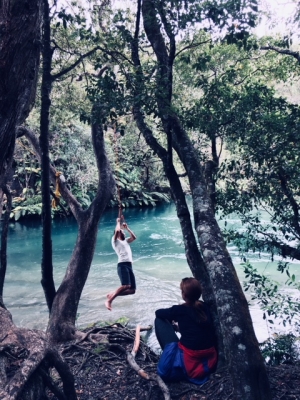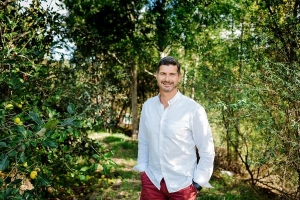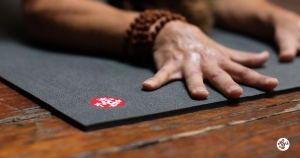
Displaying items by tag: dynamic
A Movement Rich Life
Katy Bowman spoke at the Ancestral Health Symposium in Queenstown, New Zealand October 2017 on Move Your DNA: Movement Ecology & the Difference Between Exercise & Movement
Here are a couple of exerts:
Movement isn't only affecting your arms, legs, and abs; through a process called mechano-transduction, movement influences the behaviour of your cells.
We are currently experiencing unprecedented sedentarism.
There are local effects of movement, as well as systemic.
Within an active body you can have cellular sedentarism ie running with supportive shoes (your feet have restricted movement), having smoothies & juices instead of chewing whole foods (there is minimal movement of the muscles of the jaw, tongue & face).
The key to increasing our personal movement lies in understanding how movement works & expanding our thoughts & actions away from exercise & towards a movement-rich life.
Katy Bowman has a live event this weekend in Wellington, followed by events in Nelson & Auckland before she heads back home to the States. For more details check out Katy's live events at https://nutritiousmovement.pike13.com/categories/64332
Practice Squatting to Stay Forever Young
Before the invention of the chair, squatting was part of everyone's daily life.
Today, few people can squat without pain or injury. The YogAlign squat helps release tension in your hips & legs.
This is a pose that will tone your pelvic floor & abdominal organs & in particular, your bladder. In cultures where squatting is done every day, people stay flexible & aligned well into advanced age.
Prostate & colon cancer, knee & hip replacements, & osteoarthritis are rare in cultures that still squat. This pose also aids the digestive & elimination processes & brings a feeling of lightness to your body.
Unless you are a seasoned squatter with excellent knees, it is best to use a strap for support in this pose, to keep compression off your knees.
Place a strap around a post or tree, holding one end in each hand. Slowly drop into a squatting position, with arms straight & engaged strongly through your lats to your hips & into your trunk. Activate your shoulder blade muscles to keep the blades stabilised & your neck elongated. Position the strap just below shoulder level, & keep your feet slightly turned out. Stay on the balls of your feet as you slide back, pulling on the straps while you squat with a lift in your waist, curve in your lower back & your entire spine & skull in natural alignment.
For further details consult your local YogAlign teacher or check out Michaelle Edwards's book YogAlign - Pain-Free Yoga From Your Inner Core www.yogalign.com
The five main factors that determine your performance
If You're Not Eating This Food, You're Going To Have A Hard Time Getting in Shape
by Dr James DiNicolantonio 20 September 2017 mbg
There are five main factors that determine performance. Everyone knows the first factor, and that’s training. Whether we are hitting the gym to build muscle or running to improve our cardio, the first step is always going to be lacing up your sneakers and getting active.
The other four factors are less obvious. Those four factors determine how well you perform during a workout, marathon, or an athletic competition. They are:
- Staying hydrated
- Keeping heart rate down
- Staying cool
- Maintaining blood circulation
What you may not know is that salt helps with each of those four factors—so much so that I’m proposing we consider it the sixth factor for achieving peak performance. Consuming more salt can even help to prevent overtraining, which may actually be caused by our tissues becoming depleted in salt. Consuming more salt improves those four factors by increasing water retention and vasodilating the arteries. When these two effects are combined, you are more hydrated, circulation and blood flow to muscles improves, sweat production increases (helping to keep you cool), and heart rate goes down.
How does salt help with hydration? you might wonder. Most tap or bottled water contains zero sodium, and this increases the risk of hyponatremia, or low sodium levels in the blood. Hyponatremia is a very common problem, especially among endurance athletes, and it can be fatal. We don’t just sweat out water; we sweat salt. We need to consume salt with our water if we want to reduce the risk of dehydration, cramps, and hyponatremia. Indeed, one study concluded that the primary cause of muscle cramps during exercise in warm weather was sodium deficit.
This makes biological sense. When your body works hard, you sweat. And when you sweat, you sweat out salt. Failing to replace the salt that is lost drains your tissues of salt, with wide-ranging negative effects on your ability to keep going. For example, salt depletion can lead to muscle cramping, dizziness, and fatigue, the exact opposite effects that you want during competition.
But wait—what about blood pressure? All of our health agencies, government bodies, and dietary guidelines tell us to consume no more than 2,300 mg of sodium (or 1 teaspoon of salt) per day. The American Heart Association goes as far as telling Americans to consume less than 1,500 mg of sodium per day. Never mind that the average person loses around 1,200 mg of sodium per hour of exercise, with some individuals losing more than 2,000 mg of sodium per hour. And based on the above sodium losses, even if you are eating a normal sodium diet, if you are an avid exerciser you can still be at risk of salt deficit. It’s not hard to calculate how following the low-salt advice while exercising could lead to more harm than good, so you might want to think twice about holding the salt.
I’m often asked about whether consuming sports drinks gives us all the salt we need while we are exercising. The answer is a resounding no. Most sports drinks contain only around 300 mg of sodium per liter of fluid, four times less than the saltiness of our sweat (or around 1,200 mg of sodium per liter of sweat). The reason sports drinks are missing an extra 900 mg of sodium or so is because no one wants to drink something that tastes like sweat. It’s literally too salty, so the manufacturers of sports drinks simply leave that extra sodium out.
Closing that sodium gap is where you may find your competitive advantage. And dosing yourself with salt prior to and during exercise may be the best way to close that gap. The average person may lose about a half of a teaspoon of salt per hour of exercise in sweat. If the loss of salt through sweat is not replaced this may lead to symptoms such as exercise intolerance, muscle spasms and cramps, fatigue, elevated heart rate, dizziness, hypotension, heat stroke and even circulatory collapse. The average person may also lose about 50 mcg of iodine per hour of exercise in sweat (which is why I recommend Redmond Real Salt, which contains almost this exact amount of iodine per half teaspoonful of salt). Preventing the depletion of salt and iodine that occurs through sweating is a great strategy to help reduce the risk of overtraining syndrome and even potentially hypothyroidism. You can drink the salt, or simply put it on the food you eat before or after working out. While I lay out a more precise salt dosing regimen based on ambient temperature in my book, The Salt Fix, this is a good place to start.
By Dr James DiNicolantonio author of The Salt Fix
Article from mbg mindbodygreen
ps I have just started using Harker Wholefoods Celtic & New Zealand natural sea salt enriched with NZ deep water sea kelp. It has 84 known minerals & trace elements & naturally rich in iodine. No chemicals, additives or preservatives.
YogAlign Creator Michaelle Edwards is coming from Kauai, Hawaii to teach in Tauranga
Join us for Michaelle Edward's two day YogAlign Workshop in Tauranga
Change Your Posture, Change Your Life
If you are Open to Learning & Enthusiastic about Optimising Your Wellness this Workshop is for You
Date: Saturday 2nd & Sunday 3rd of December 2017
Venue: Ohauiti Settlers Hall, 459 Ohauiti Road, RD3, Tauranga, New Zealand
Blossom this Spring starting with a Detox!
Normally I'm not one for detoxing as the body does an amazing job constantly! But after a fabulous holiday which included much over indulging I feel like I'm going to give my liver and other organs a helping hand to start the Spring Season with a little more vitality and energy.
I like the following guideline from MBG by Tiffany Cruikshank and decided that I would be more likely to follow through if I had a plan :)
After an inspiring evening from Dr Libby Weaver last night, I purchased her Bio Blends www.bioblends.co.nz Liver Love, and I shall use Welleco's www.welleco.com.au Alkalising Greens and Protein Powder and the Detoxify Tea Blend from www.wellingtonapothecary.co.nz. So modify the following plan from Tiffany Cruikshank www.yogaglo.com as you need to and join me! Take it away Tiffany ...
Below is my 7 day detox, I recommend reading it through and tweaking it a little to fit your lifestyle if you need to. Remember anything you do will be helpful but try to make a plan that you can stick to. The most important items I recommend are doing the smoothies, not eating after 7pm, trying to keep dinner smaller than breakfast & lunch and the Gymnema is key for the sugar cravings and balancing the blood sugar so you feel better in the process.
7 Day Detox
Yes: Veggies, fruit, nuts, water and plenty of fresh, organic, local produce
No: Sugar, alcohol, caffeine, gluten, dairy, soy, eggs, peanuts, artificial sweeteners
Water: Half your body weight in ounces daily
Day 1-2 & 6-7:
- 7-8am: smoothie
- 10-11am: snack
- 12-1pm: steamed veggies & nuts for lunch with olive oil, lemon and sea salt
- 3-4pm: snack
- 6-7pm: smoothie
Day 3-5:
- 7-8am: smoothie
- 10-11am: snack
- 12-1pm: smoothie
- 3-4pm: snack
- 6-7pm: smoothie
Snacks: a piece of fruit & nuts, celery & almond butter, snap peas & nuts, rice crackers & hummus, plain rice cake with almond butter, steamed veggies & nuts, avocado with sea salt, even just a few nuts will do if you don’t have time to plan ahead
Simple Smoothie:
- Fresh or frozen fruit (½ a banana or ¼ avocado make a good creamy base)
- Veggies (pick 2-4:spinach, cucumber, kale, chard, collard, fennel, celery, carrot, parsley, mint, avocado, etc- careful with some of those if you don’t have a heavy duty blender like a Vitamix)
- Handful of hemp seeds, almonds or walnuts
- 2 scoops Mediclear Plus protein powder by Thorne
- Water to desired consistency (maybe half coconut water)
- Greens powder supplement (Earth’s Promise, Vitamineral Greens, Greens First or Paleogreens)
With Meals (optional): Liver-GI Detox by Pure Encapsulations 1 pill 3xs a day with meals/smoothies, Gymnema Sylvestre 400-1000mg 3xs a day with meals/smoothies (to help balance the blood sugar and eliminate sugar cravings), B complex 100 by NOW with lunch (for an energy boost)
Yoga: 3-6 times/week & meditate at least 10 minutes a day
The supplements, greens & protein powder above are available for purchase online, just Google them.
I love this detox because it is really simple (not easy) and if you’re busy and don’t have a lot of time to cook and prepare food this detox is for you. If you drink a lot of coffee take a week to ween off prior to the detox don’t just go cold turkey. The gymnema will help a lot with the food cravings & appetite and will help regulate the blood sugar so you feel better during the detox.
Since you won’t be spending as much time cooking or eating out, try to keep it simple and enjoy your down time even if it’s brief. Feel free to modify this detox as you need to (make it longer/shorter, easier/harder, etc), doing part of it is better than nothing at all.
When you’re finished you can continue on the day 1& 2 regimen as long as you like if you’re feeling good. I find that I get hooked on it and like to continue it this way for a while and maybe take a day off here and there to have a glass of wine from time to time.
Happy Detoxing!
Connecting with Nature to gain Optimal Wellness
Deep Ties to the Earth: How One Northern Cree Tribe Finds Peace of Mind

Mybona/Thinkstock
A new study reveals that the community’s strength and resilience are tied to the people’s spiritual openness, community engagement, and connection to the land.
Only when the last tree has died and the last river been poisoned and the last fish been caught will we realize we cannot eat money. — Cree Proverb
In northern Ontario, near Hudson Bay, lies a remote, fly-in only Cree community with significantly lower rates of depression and suicide than other aboriginal communities in the area. In an effort to understand why this is so, a couple of researchers obtained grant funding, ventured into the area and asked the community members themselves. The findings of their study are published in the International Journal of Mental Health and Addiction.
The researchers wanted to avoid the Western medical model of focusing on pathology, or illness, alone, so they chose to interpret the participants’ responses according to the “medicine wheel” of traditional healing. This wheel reflects the four dimensions of the self (mental health, physical health, emotional health and spiritual health) as equal parts of a larger whole.
Overall, the findings reveal that the community’s strength and resilience in all four of these areas of health are tied to the people’s spiritual openness, community engagement, shared parenting, and perhaps most notably—a very deep connection to the land and traditions. In fact, most striking to the researchers was the way in which a connection to the land was interwoven throughout all of their responses.
For example, the community members said that their practice of harvesting and hunting their own food provides them with several important benefits: healthy meals, physical exercise and a connection to Cree traditions and cultural practices. They also believe in the importance of benefiting from the entire animal with one respondent saying “when people just harvest this for the sake of the meat and throw away a lot of stuff…they’ve lost their culture totally.”
Seeing wild animals on a regular basis is another fantastic perk, and the land is open and free, allowing people to feel comfortable where they are. In what was perhaps a particularly telling response, one participant said that the community did not “administer social assistance” as it has the potential to make “people totally quit from living off the land.”
The land itself is considered a source of spiritual renewal and healing. The respondents spoke of having a way of life that is still in touch with the natural flow and rhythm of wildlife. A majority referred to their relationship with the earth as a spiritual connection: “when you’re there, it’s like your spirit, your mind, and your physical well-being – everything improves when you’re out there; it’s like you rejuvenate while you’re out there.”
Perhaps the rest of us can learn from these important findings as well and give us substantial food for thought: How disconnected do you feel from the land? Do you take long random walks in nature? Do you see animals on the regular? Do you garden—or at least know where your food comes from? If not, make an effort this week to forge a deeper connection to the earth. Perhaps you will notice a different state of mind—and even a little peace of mind.
Traci Pedersen is a professional freelance writer who specializes in psychology, science, health, and spiritual themes. Some of her most recent work includes covering the latest research news in science and psychology, writing science chapter books for elementary students, and developing teacher resource books. When she is not researching and writing, she is spending time with her family, reading anything and everything, and going to the beach as often as possible.
The Hormone Secret with Ben Warren
WHAT’S REALLY IN THE WAY OF YOUR HEALTH, ENERGY AND WEIGHT?
Join Ben Warren as he presents the secret role hormones play in your health and wellbeing over this inspiring and empowering seminar, on his latest New Zealand nationwide tour.
From stubborn weight that just won't budge to energy slumps, painful PMS and heavy periods. Many of us don't realise is that these key health concerns can be caused by hormonal imbalances within the body.
Unfortunately, our modern day environment is completely geared against healthy hormone balance... especially when it comes to female hormone health!
We know many of you have been struggling with your health concerns for a long time, particularly weight loss. It's time to understand the role hormones play in your health, mood, energy and weight. And it's time to learn how to bring your body back into balance through nutrition and lifestyle choices.
In this completely NEW, 2.5-hour seminar, 'The Hormone Secret,' leading New Zealand clinical nutritionist, Ben Warren, will present his latest research on hormone health. During this evening Ben will help you uncover the secret role hormones play in your health and wellness and learn what's really in the way of your optimal health, energy and weight.
Join Ben Warren in Tauranga Wednesday 27 September 2017 www.bepure.co.nz
Breath Your Way to a Pain-Free Life with YogAlign
Most of the ‘breakdowns’ and chronic pain patterns in the human body occur in the joints. When you change alignment patterns, joints are no longer compressed and misaligned, so the real healing by the body itself can happen on a deep level.
As you gain the tools that will connect all parts of your body with better oxygenation, nutrition and proper alignment, the bio-intelligence can then heal the joint tissues that have become thin, damaged or arthritic. The best way to do YogAlign is to walk, run, dance or move with a focus on maintaining upright posture. Eventually naturally aligned posture becomes innate and just the way you are naturally…. without effort.
With YogAlign you can get back into good posture without painful positions, compressive twists or toe touching poses. You can literally breathe your way to a pain-free life.
Contact Leonie Main
m: +64 (0) 274 96 96 33
19B Golf Road, Mount Maunganui 3116, New Zealand
Facebook: Gypset Life










